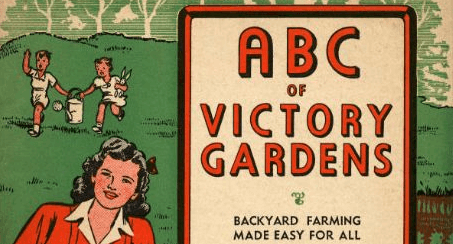The Victory Garden- Irrigation
Wouldn’t it be wonderful if every night the heavens opened up and let a gentle rainfall for an hour or two while we slept? We’d wake up every morning to shimmering dewdrops clinging to the tips of lush green leaves and watch them slowly meander down the sides of ripe, juicy, crimson tomatoes just begging to be picked… okay, wake up…back to reality!
We may have wet springs in Tennessee, but the summer heat will rear its ugly head by May and do everything in its power to suck all the water out of our garden. Covering your vegetable plot with mulch as we covered earlier is a great moisture loss preventative, but you will still need to water those plants!
Let’s consider some tools and methods we can put in our box of irrigation tricks to save us some time and money.
First, we’ll learn about effective watering. Some vegetable plants have very shallow roots and others grow very deep. Those plants with deep roots are the ones to be most concerned about. Dousing your garden with a hose until the soil looks wet is a path to unhealthy plants. Shallow watering causes roots to form at the surface weakening the plant. It takes time for water to absorb into the soil and reach the deepest roots that take up nutrition but, let’s be honest, not everyone has time to stand in the garden holding a hose for an hour or more. So let’s look at some time saving more effective options.
Sprinklers are a good way to water a large area but the downside is that they usually end up watering areas that don’t contain any plants and if not positioned correctly can miss the edges of the garden entirely. There is also a great deal of water loss through evaporation as the water flies through the air especially if it’s a windy day.
Drip hoses are a more targeted watering method. These are laid down the row several inches away from the stem on both sides of the plant. The dripping water will slowly make its way down to the deepest roots giving it a proper drink. If you have a small garden, drip hoses sold in home improvement stores will work just fine but, if you have a larger garden, you may want to consider drip systems sold by farm supply companies. They hold up exceptionally well and are very economical.
Speaking of economics, if you have city water and a large garden your water meter may start spinning like a whirligig in a hurricane! Water harvesting may be the solution for you!
There are tons of great how-to videos on how to build water harvest systems, from simple rain barrels to complex cistern setups. If you are interested in giving any of them a try, go for it, they are a great money saver and one more way to become independent and sustainable. Plus, your vegetables will really appreciate the non-chlorinated drink! Just keep in mind that these watering systems only work with gravity. If your water collection system is on the same level as your garden you will need a pump and source of electricity to get from point A to point B.
Do your research, consider your individual garden plan and time limitations, and choose the right irrigation system for you!

